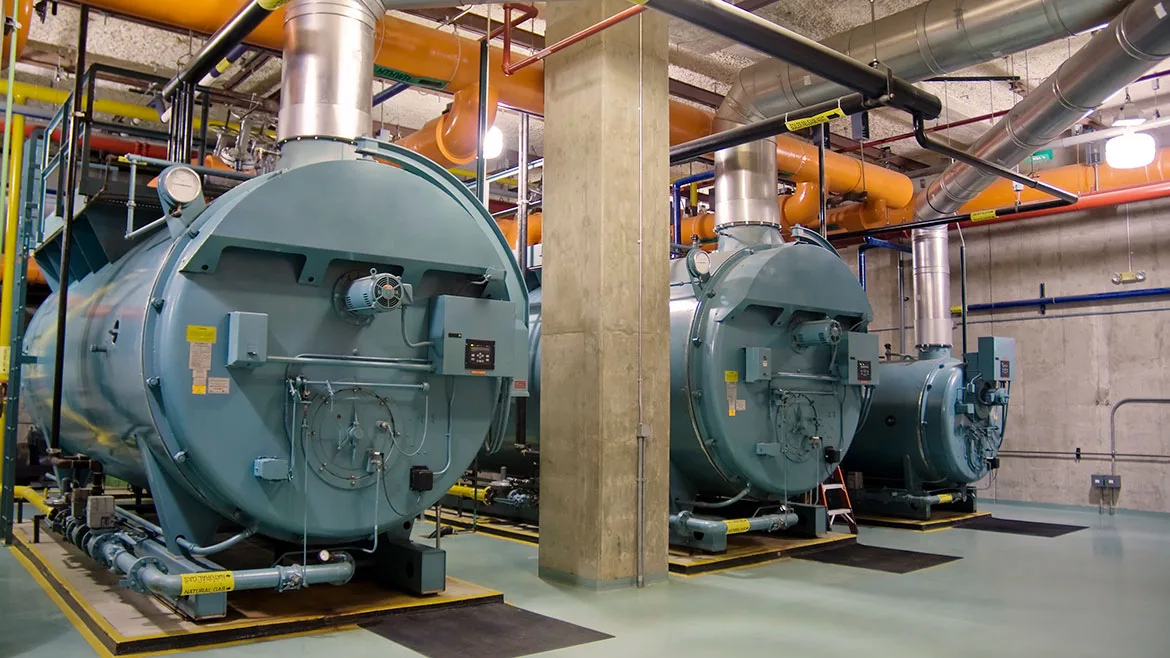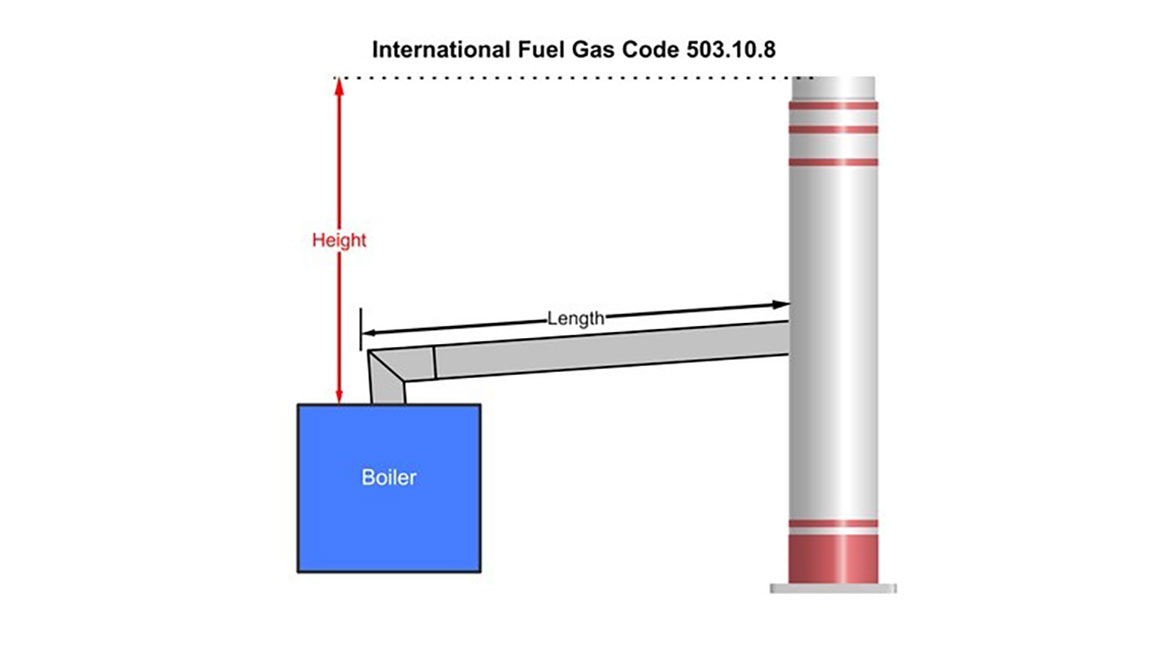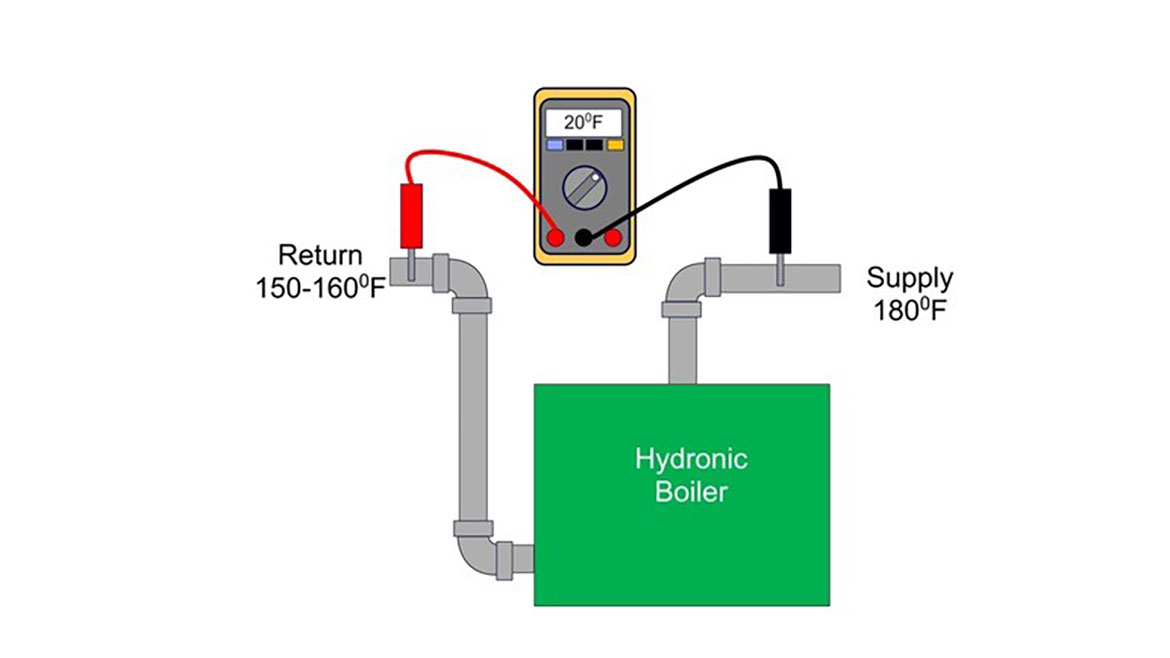The Boiler Room | Ray Wohlfarth
Avoiding problems on your next hydronic boiler project
Best practice tips when replacing a boiler system.

Image Source: Westhoff / E+ / Getty Images
Always assume the old boiler was installed wrong. This principle has served me well in my career by finding problems before we own the system. By assuming there is a mistake, I verify the following components are properly sized if reusing them: expansion/compression tank, piping, flue, combustion air, or pump.
If the old boiler can operate, I like to run it. While the old boiler runs, we log the water temperature rise or Delta T through the boiler. The Delta T helps me estimate the existing pump/circulator flow rate. Does the boiler have flue gas rollout? This could indicate chimney or venting issues.
Check the water temperature setpoint or if there is an existing reset control. If the existing non-condensing boiler operated at water temperatures below 140° F for an extended time, there could be damage to the chimney due to condensing flue gases.
Look for discoloration on the boiler jacket. This could mean inadequate combustion air or soot inside the boiler's fireside passages.
I also ask this question for each project: “Why are you looking to replace the boiler?” It helps me find hidden problems I may inherit later.
I perform a heat loss study of the existing building, adding 15-20% for a safety factor. Afterward, I compare my calculations to the existing boiler to see how close they are. Many contractors size the new boiler by looking at the ratings of the existing one and choosing one that is the same size or larger. The old boiler may have been what the wholesale house had in stock when it was replaced. Once we have the boiler sizing, I check the sizing of the other system components.
If the old boiler is 50% larger than your calculation, the existing pump may be oversized by the same percentage. If the pump is oversized, the water velocity could erode the piping and cause leaks. An undersized pump could shock the new boiler by causing too high of a temperature rise.
Reusing the existing pump is commonly done but could lead to problems. According to ASHRAE, the average life of a base-mounted pump is 20 years, and a pipe-mounted pump is 10 years. You may be doing the customer a disservice by connecting a new boiler to piping with a thirty-year-old pump.
The circulator is typically piped and wired on the boiler return piping when purchasing a residential or small commercial boiler. This could create system problems, such as air in the system. The air causes internal corrosion and no heat calls when it accumulates in the highest radiators. The boiler should be piped with a circulator on the supply pipe, pumping away from the expansion tank. This will virtually eliminate the air inside the system and the need to bleed radiators.
How will I remove the air from the system is a question I like asking myself. I look for existing air removal fittings. If there isn’t one, I include it in my quote and tell the owner what it does and why air removal is important. Some of the older cast iron sectional boilers had internal air removal fittings. The new boiler will probably not have one. Look at the highest radiators. Can you access the manual air vents? Should you install an automatic one?
Inadequate combustion air is another critical issue. Boilers need proper ventilation to operate safely and efficiently. Poor ventilation can lead to dangerous carbon monoxide buildup and reduced efficiency. Ensure the boiler room has sufficient combustion air according to local codes and manufacturer guidelines.
Verify the pipe size is correct. An undersized pipe would lead to higher water velocity. I use 2-6 feet per second for the desired water velocity. Velocities greater than 6 feet per second could cause the piping to erode.
Most boiler manufacturers recommend or require flushing the existing hydronic piping to remove any accumulated mud or dirt. One manufacturer will void the warranty if this is not done. I remember speaking to a pump manufacturer, who told me that dirt in a hydronic system is the leading cause of pump failures under warranty. Flushing the system is a great idea as the piping could be filled with junk, dirt, or mud, which could destroy the boiler or circulator and void the warranty.
Is there a three-way valve? An incorrectly installed three-way valve could damage the boiler by thermal shock. Most hydronic boilers are designed for a 20° Delta T or temperature rise. If it's greater than that, it could destroy the boiler. Look at the terminal units in the spaces, such as baseboard radiation or radiators. Do they have control valves? If so, these could affect the flow of water through the boiler. You would not want to deadhead a brand-new circulator.
FIGURE 1


Improperly venting the boiler can cause dangerous conditions. If venting through the sidewall, look at the wall where the vent pipe will be run. Are there windows that open or louvers where flue gases can reenter the building? Consult the local and national codes for properly venting flue gases through the wall. Look at the water heater flue if using sidewall venting for the boiler. Will the existing water heater flue be orphaned inside the old chimney? If so, a chimney liner is usually needed. This could be expensive if not included in the original bid.
FIGURE 2


If you are replacing the boiler with a non-condensing boiler, verify the boiler can be vented properly. How far is the chimney from the new boiler? The International Fuel Gas Code 503.10.8 limits the horizontal flue pipe length to 75% of the chimney height when using a single-wall flue pipe. The horizontal flue pipe length can be the same as the chimney height if a Type B vent is used. For example, if the stack is thirty feet high, the horizontal single-wall flue pipe length is limited to 22 1/2 feet.
Verify the flue and chimney are in good condition if they are being reused and not oversized or undersized. In some locations, a chimney liner is required for the new boiler if venting into the chimney.
Many of the new high-efficiency boilers require water treatment. Be sure to check to see if the one you're installing does. The boiler manufacturer may be able to provide the water treatment. The treatment levels should be tested yearly.
Reusing the existing pump is commonly done but could lead to problems. According to ASHRAE, the average life of a base-mounted pump is 20 years, and a pipe-mounted pump is 10 years. You may be doing the customer a disservice by connecting a new boiler to piping with a thirty-year-old pump.
The acid neutralizer lowers the acid content in a condensing boiler's flue gases. Most municipalities do not permit acidic water down the drain, as it could damage the piping. Be sure the acid neutralizer is installed. It must be checked yearly.
The air temperature can change the air-to-fuel ratio when using combustion air directly to the outside. As the air gets cooler, the oxygen level increases. The oxygen level lowers as the air warms or the barometric pressure drops. Verify that your air-to-fuel adjustment will work under different barometric conditions.
I hope this helps you on your next hydronic replacement project.
Looking for a reprint of this article?
From high-res PDFs to custom plaques, order your copy today!






